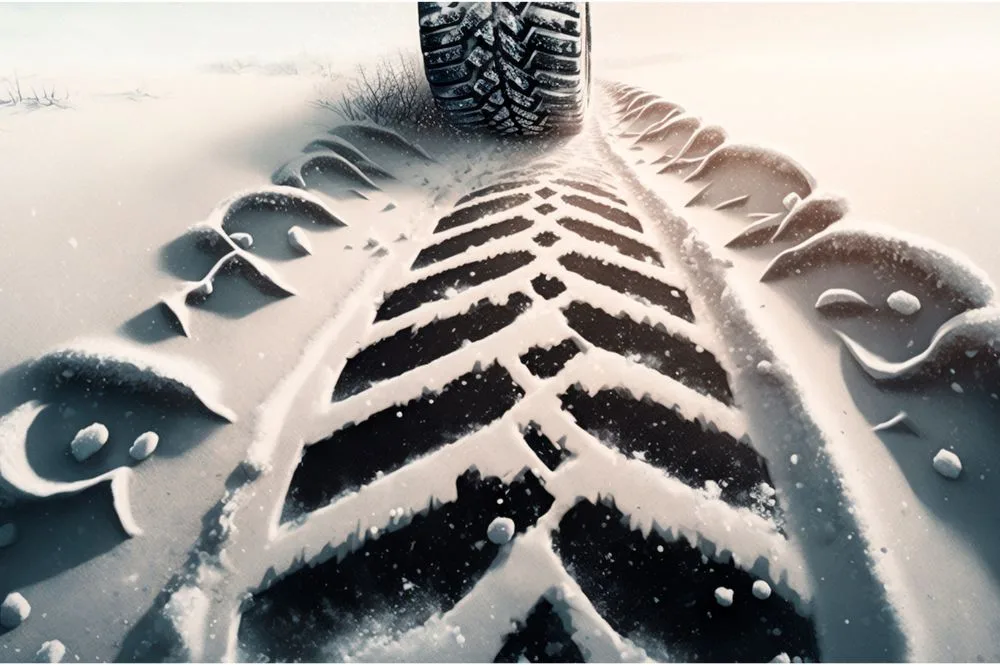Winter tires pressure
To ensure a safe, smooth, and comfortable ride, having the optimal car tire pressure is critical. However, not all tires require the same tire pressure or need to be checked at the same frequency.

Weather and driving conditions can have a major effect on the pressure of your tires. In winter, freezing temperatures and harsh weather conditions, such as snow and ice, can result in tires losing their pressure faster. That is why the pressure of your winter tires must be checked more frequently and why some suggest inflating your winter tires slightly beyond what is recommended during the cold months. The dangers of driving with underinflated winter tires include major tire failures like increased braking distance, overheating which could lead to blowouts, and less control over steering and handling. Underinflated winter tires will also wear down quicker and result in poor gas mileage.
WINTER TIRE PRESSURE VS. SUMMER TIRE PRESSURE
As mentioned above, the optimal tire pressure for winter tires is not the same as summer tires. The reason for this is the varying weather conditions and temperatures of each season. In winter, due to the drop in temperature, air contracts and the molecules move closer together. This results in a loss of volume to the tire, which quickly leads to lower car tire pressure. In summer, on the other hand, the warm temperatures cause the air inside your tires to expand. Plus, in summer, the roads themselves are hot, which leads to more friction, which in turn, leads to higher tire pressure. For this reason, you can expect your summer tire pressure to increase in the first half-hour of driving before stabilizing. Ultimately, it’s important to consider the optimal tire pressure for the specific type of tire and conditions in which you’re driving, as these external factors will have a bearing on the pressure of your tires.
WHAT SHOULD MY TIRE PRESSURE BE?
The ideal tire pressure for most vehicles is between 30 and 35 PSI (pounds of force per square inch). However, to find out the exact ideal tire pressure for your car, we recommend checking the manual. All vehicle manufacturers include the recommended tire PSI for tire inflation in the manual. It’s typically also written on the driver’s side door on a sticker. Beyond the recommended PSI rating, every tire will have a Max PSI rating, which denotes the maximum carry load. This number can typically be found on the inside of the tire’s sidewall. As mentioned, to ensure your winter tires have the optimal car tire pressure, it’s a good idea to check your manual or call your local auto body shop. However, be sure never to fill the tires less than 30 PSI as that can affect steering, handling, and fuel economy. Also, for winter tires specifically, some manufacturers recommend operating them with a slightly higher PSI, usually between 3 to 5 PSI higher than the ideal pressure for summer or all-season tires. Again, this is because winter tires tend to lose pressure faster than summer tires due to the cold air. Many tire manufacturers, like Firestone and Goodyear, estimate that tires lose 1 PSI for every 10 degrees that outside temperatures drop. Keep this in mind, especially if you live somewhere with a cold climate like Canada.
WHEN TO CHECK YOUR WINTER TIRE PRESSURE
In winter, when tires tend to lose pressure the fastest, it is recommended that you check your winter tire pressure once a month. It has been noted that a tire can be up to 30 percent underinflated without visibly looking to need air. Beyond checking once a month, you’ll also want to check the tire pressure of your winter tires at an optimal time of day. You want to check the tire pressure only when the vehicle has been parked for a while (at least three hours). You never want to check tire pressure shortly after driving as this can provide an inaccurate reading. That is why we recommend checking your tire pressure in the morning. Also, be sure to check the pressure of both the front and rear tires in case they’re different.
SHOP WINTER TIRES AT TIRE WAREHOUSE
Interested in purchasing a new set of winter tires? You’re in the right place. Tire Warehouse has been in business for over 40 years, and during this time we’ve developed a reputation as the #1 tire provider in Canada. We have winter tires to suit all makes and models of vehicles and carry models by the leading tire brands in the world, like Bridgestone, Michelin, Toyo, Firestone, and BFGoodrich. Plus, Tire Warehouse makes shopping for new winter tires a breeze. We have an easy-to-navigate website, fast delivery times, low shipping costs of just $5 per tire, and we ship all across Canada. Before you know it, your new tires will be delivered right to your front door (or the installer of your choice). Tire Warehouse even has its own mobile installation service, should you prefer for one of our automotive professionals to install and balance your new tires right there on the spot. For the height of convenience, unbeatable savings, and an unrivalled tire inventory, look no further than Tire Warehouse. Contact us today to speak to a tire expert and learn more about optimal winter tire pressure and our winter tire offerings. Learn more about winter tires vs all-terrain tires
In stock & ready to ship
Find the tires you need, delivered from a warehouse near you
